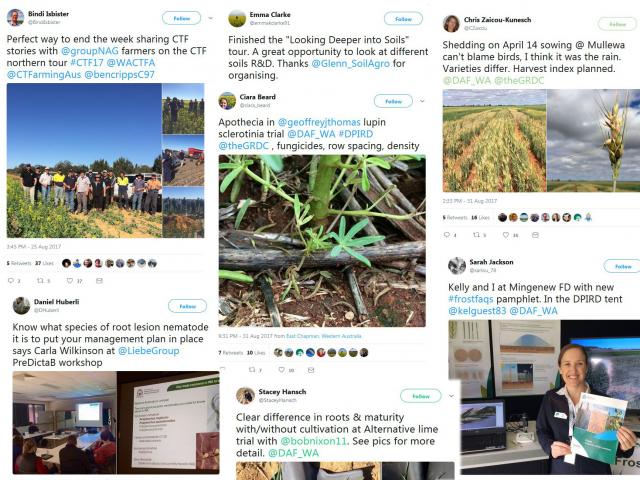Aphid control app – to spray or not to spray?
Canola growers can now improve their aphid spray applications with a new mobile device app.
MyPestGuide CropScout is an application designed to assist growers, consultants and other field technicians apply spray thresholds for pests in crops.
The free app calculates whether the threshold required to spray for canola aphids has been reached, following a series of crop inspections, and then provides a map of results indicating where to target sprays either between crops or within individual paddocks.
The CropScout app currently includes a module for cabbage and turnip aphids in canola and it will enable grain growers and consultants to make timely, informed decisions about when and where to spray paddocks for pests.
How CropScout works
Canola growers can sample at least four locations around the edge of a paddock to indicate whether or not aphids are present on canola branches while using the app.
If aphid levels are found to be above the threshold, further surveys can be conducted more than 20 meters from the paddock edge to determine if sprays can be targeted to aphids gathered along paddock edges.
The app will tell you whether infestations are above, below or close to the spray threshold.
By following the prompts, users can retrieve a map of results and decide where to target their treatment.
As a result, grain growers can spend less time inspecting crops, have more control over sampling accuracy and use less chemical, which reduces the risk of developing pesticide resistance.
The app is simple to use, while the threshold calculations and GPS accuracy operations run in the application’s background.
When the results are approaching the spray threshold and to provide some foresight, the tool’s indication of ‘above threshold’ is displayed in red, ‘below threshold’ in green and ‘caution’ in orange.
The CropScout app does not need mobile telephone coverage or WiFi to operate in the field, although the mapping interface requires mobile or internet connection.
The data can be uploaded to the user's personal account to view and store results in the department’s CropScout web page or integrated as a spreadsheet on the office computer for record keeping purposes.
It can also record the field name, plant growth stage and notes from each sampling run.
There have already been early reports of canola aphids from the grainbelt, suggesting it could be a busy year for canola growers to control the pests throughout spring.
Aphid damage can lead to seedling death or stunting, tiller or flower abortion and reduced seed set and size, ultimately limiting grain yield.
The CropScout app can be downloaded to Android or iOS devices.
For more information contact Dusty Severtson, Development Officer, South Perth on +61 (0)8 9368 3249.
Reduce water erosion risk with planned controlled traffic farming systems
The importance of surface water management to reduce the risk of water erosion associated with controlled traffic farming (CTF) was highlighted following widespread flooding across the grainbelt due to unseasonably heavy rain in February 2017.
Some areas received 300mm of rain over a few days, which is greater than a 1:100 year rainfall event.
Significant soil erosion was reported from a range of farming enterprises and systems, including but not exclusive to CTF systems.
The primary driver of erosion was the rainfall amount, distribution and intensity, with the majority of erosion occurring where water flows became concentrated.
Previous research has shown that the regular orientation of furrows and tracks in an up and downhill CTF system enables surface water to drain uniformly down the slope, reducing the risk of furrow overflows and erosion.
Surface water management measures may also be required to direct water safely, depending on soil and landscape characteristics and the property’s paddock layout.
It is important to minimise erosion risk of wheel tracks by filling in sunken or rutted tracks using commercial renovators that are available or versions that farmers have engineered.
When designing a CTF layout, farmers need to consider the slope of the land, length of run, catchment area and soil type.
These all contribute to the speed and erosive potential of the water flowing downslope.
Long runs, often the most efficient for machinery operations, may need surface water management structures to break up sloping land where gradients are greater than 1%.
This will also assist with reducing waterlogging or inundation in higher rainfall areas.
Broad based banks to divert water flow are compatible with CTF and are suitable for slopes with gradients up to 6%.
Broad based banks have a wide channel that allows machinery to drive through the drain and over the gentle bank .
The optimum length of run and bank spacing will depend on soil type, slope gradients and rainfall intensity.
Information on rainfall intensity for a specific location is available from the Bureau of Meterology website.
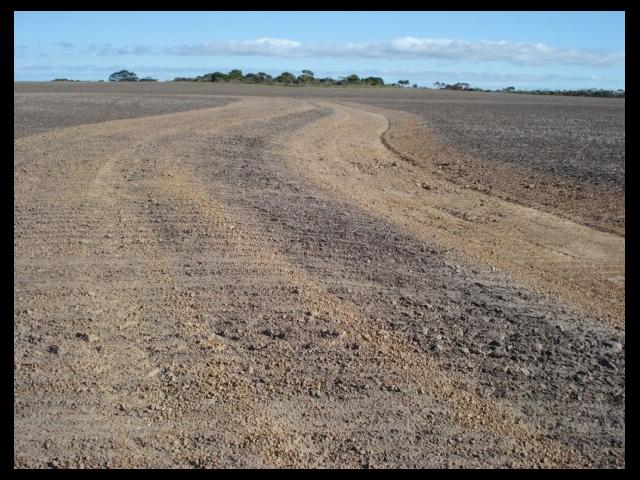
Banks must run water to a safe and stable waterway, which can be a constructed grassed waterway, or a naturally-vegetated creek or river.
Plant roots and organic matter in grassed waterways slow down water and reduce its erosive potential.
Managing the erosion of water flows by maintaining good stubble cover and catch drains along access tracks can prevent erosion and costly remediation.
It is important to integrate water management between paddocks and farms of a watershed, to safely dispose of excess water and reduce the severity of damage caused by flood events.
It is also critical to prevent water shedding from uncultivated areas, such as rocky outcrops and roads, to avoid excess water concentrating in wheel tracks, which are unable to channel large volumes of water.
Information to assist landholders develop an integrated surface water management plan includes:
- farm knowledge
- water flow path maps
- catchment accumulation models
- aerial photographs
- soil type maps and topographic data
- yield maps
- satellite imagery.
Some of this data can be accessed for free from the Maps and Data page on the Department of Primary Industry and Regional Development website while more information on CTF can be found at Developing a controlled traffic (tramline) farming system.
Further information
- Surface water management
- Manage Surface Water - Liebe Group
- Controlled Traffic Farming Case Studies, WA – GRDC
- Controlled Traffic Farming Technical Manual - NACC
The project, Minimising the impact of compaction on crop yield, is funded by GRDC.
For more infromation contact:
- Bindi Isbister, Development Officer, Geraldton on +61 (0)8 99568532
- Paul Galloway, Research Officer, Esperance on +61 (0)8 9083 1127
- John Simons, Research Officer, Esperance on +61 (0)8 908 1128.
New resource can help answer frost questions
What does frost damage look like? How do stubble loads affect frost severity? How do I harvest a frosted cereal crop? What management options do I have to minimise frost damage?
The Department of Primary Industries and Regional Development (DPIRD) has compiled answers to these questions and more as part of the new Frost – Frequently asked questions document.
The publication is designed to provide guidance to growers and advisers seeking information about management issues relating to frost damage of cereal crops - a significant annual production constraint for the Australian grains industry.
Frost can affect crops in several complex ways and this easy-to-read resource includes answers to many questions asked by growers about this crop production issue, which is uniquely challenging due to its sporadic nature, unpredictability and the occasional magnitude of its severity.
The publication incorporates findings from projects being conducted as part of the Grains Research and Development Corporation’s (GRDC) National Frost Initiative (NFI).
The NFI is an integrated program which combines frost management, environment and genetics research, development and extension programs.
Frost – Frequently asked questions includes diagrams, detailed images and descriptions to determine whether plants are frost damaged, as well as links to further information.
The publication has been produced in response to concern from growers across the grainbelt who experienced widespread crop damage from multiple frost events in 2016.
Frost is a multifaceted phenomenon, with multiple issues affecting its severity and duration.
This user-friendly publication harnesses and simplifies a wealth of scientific and anecdotal information to assist growers to better understand the factors that influence frost severity on different crops, the extent of subsequent damage and available mitigation options.
To access the PDF version of the publication, refer to Frost – Frequently asked questions on the GRDC website. A hard copy will be distributed in the September/October edition of GroundCover™ to growers and agronomists in selected areas in GRDC’s western and southern cropping regions.
For more information contact Development Officer Kelly Ryan, South Perth on +61 (0)8 9368 3480 or Research Officer Ben Biddulph, South Perth on +61 (0)8 9368 3431.
Wheat variety decisions made easier with new variety guide
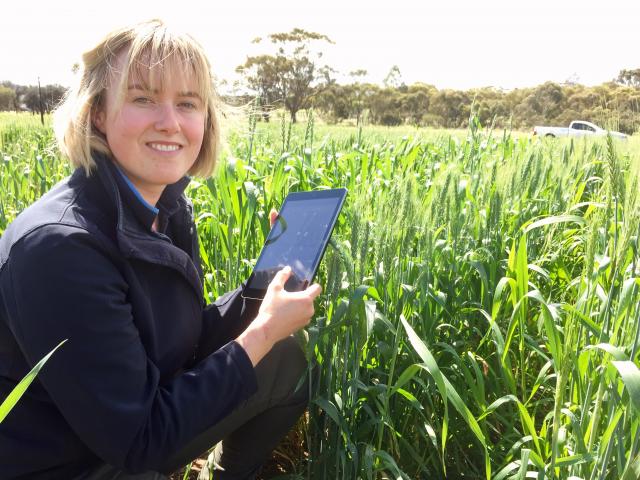
Additions have been made to the former wheat variety guide that will make variety selection easier for Western Australian grain growers.
The updated, recently-released 2018 Wheat variety sowing guide for Western Australia features new tools and information, along with a profile of several new varieties.
The guide is produced by the Department of Primary Industries and Regional Development, with support from the Grains Research and Development Corporation (GRDC).
It draws on results from the GRDC’s National Variety Trials (NVT), the department’s agronomy trials from across the state’s agricultural area and information from commercial breeders and agronomists.
The guide enables growers to compare the performance of different varieties across a range of environments and understand the strengths and weaknesses of each.
While a number of varieties out-yielded the benchmark variety, Mace, in recent NVT trials, it is important for growers to consider whether changing to a newer wheat variety would bring any real advantage over older wheat varieties.
While yield is important, disease tolerance, quality and other factors play a large part in growing a successful wheat crop.
In selecting a new variety, it should have a yield and disease rating equal to or better than the currently sown varieties, provide diversity or risk mitigation, and it should suit the current requirements.
When making variety selections, growers should use the guide to compare the performance of wheat varieties across a range of environments and yield groups.
Across the grades, differences between varieties and their yields are most obvious in the higher yielding environments.
Information contained in the guide will help growers to choose the highest yielding variety for their environment, while highlighting each variety’s potential agronomics and disease issues.
The guide features a selection of fact sheets as a quick reference for 22 common and recently-released varieties, as well as a disease update, suggested sowing times and an overview of variety agronomy management and herbicide tolerance.
It also includes updates of classifications from Wheat Quality Australia.
The guide also includes an overview of the performance and characteristics of new varieties Chief CL Plus, Cutlass, LRBP Arrow, LRBP Havoc, Ninja, Scepter and Tungsten.
To access the PDF version of the guide, refer to 2018 Wheat variety sowing guide for Western Australia on the department’s website. A hard copy will be mailed out to subscribers of the GRDC’s GroundCover magazine in September.
For more information contact Development Officer Georgia Trainor, Northam on +61 (0)8 9690 2083.
Soil acidity remains an international challenge

The challenge of managing soil acidity through tailored lime treatments continues to be an international dilemma, as two local scientists discovered during a recent study tour of South Africa.
Department of Primary Industries and Regional Development senior research scientist Chris Gazey recently returned from a four week tour of the country with Premier’s Agricultural Entrepreneurship Program Award recipient, Dr Steve Carr, general manager of Aglime of Australia.
The pair visited more than 10 farms, five lime mine sites, numerous fertiliser manufacturers and agribusinesses, and attended the massive NAMPO Harvest Day, which attracts machinery dealers from around the world.
They discovered that the soil constraints facing South African landholders are similar to those in Western Australia, despite some differences in soil types, and in many cases, WA landholders are ahead of the game, particularly with soil sampling to depth.
A key difference is that WA growers have access to affordable, natural sources of high quality agricultural lime.
The pair was particularly interested in several machinery prototypes that were being developed to incorporate or mix lime below the soil surface, because South Africa, and other countries, appeared to be tackling the same issue as WA agribusinesses of how to best incorporate lime into the soil to mitigate acidity.
While top dressing remains the most popular method of applying lime, local and international research has shown there are benefits to distributing lime in the soil profile and placing it where it can react and neutralise acidity below the soil surface, more quickly.
Although Mr Gazey and Dr Carr could not find a ‘single bullet’ solution, they identified several prototypes and concept designs to achieve that, such as modified tynes and shafts.
The next step is to gain a better understanding of how the degree to which lime is incorporated creates pathways in the soil for roots, assessing root growth responses at 20-30 and 40 centimetres, and developing appropriate machinery to do that for WA soils.
For more information contact Senior Research Officer Chris Gazey, Northam on +61 (0)8 9690 2256.
Protecting WA Crops
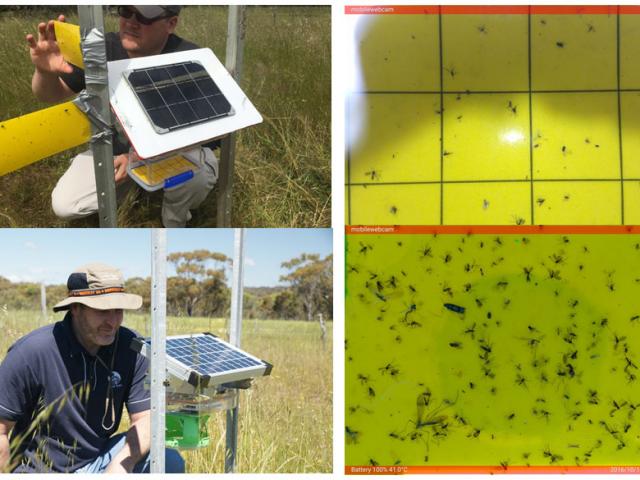
The department’s Crop Protection team has refreshed the previous eWeed newsletter to bring you a bigger and better format: Protecting WA Crops.
In response to industry need, the new format focuses on a single topic per edition, providing comprehensive information on a weed, disease and pest threat that impact on crop production.
Department Crop protection Portfolio Manager Sally Peltzer said the newsletter comprised high level scientific and technical content that agronomists and growers are asking for.
It focuses on one topic per edition, allowing the opportunity to delve into important aspects of research and explore key findings, while putting it into the context of the current growing season.
This year, Protecting WA Crops has released five issues, with the key topics being:
Sclerotinia stem rot
Department plant pathologists are at the forefront of research into sclerotinia in canola to minimise yield losses for WA growers. This edition focused on describing sclerotinia stem rot and understanding the lifecycle, cultural management, fungicide application, the department’s forecasting tool, and information and strategies to help industry combat the disease.
Protecting oats – the super break(fast) crop
Oats are more aggressive against weeds than most other crops. This edition included information on oat breeding and disease resistance in WA, the legal use of Trifluralin in oats, their susceptibility to root lesion nematodes, oats and leaf diseases, and crown rot and oats.
Aphids: WA’s insect problem children
Aphid infestations can result in economic losses in crops. This edition included information on aphid damage, expected activity this season, research conducted on aphid identification, monitoring and spray thresholds. Other details covered included automated trapping for early detection and tips on how to make sampling plans quicker, easier and more targeted.
Wheat powdery mildew - how high is the risk this season?
Over the past few years, the department’s Plant Pathology group has been working on many aspects of the biology and management of this disease. This edition included information on variety resistance screening, the use of fungicides at seeding or during the season, and the best strategy for managing wheat powdery mildew.
Green bridge – are you getting more than you bargained for this season?
Green bridge might impact on this year’s crop by competing for water and nutrients, providing a habitat and encouraging the build-up of insect pests, and providing a host for pathogens. This edition includes information on summer weeds, new research in summer and emerging weeds, control options and disease, and pests connected to green bridge.
The Crop Protection team welcomes suggestions of additional topics, comments and questions. To sign up to receive the latest edition and review previous editions visit Protecting WA Crops.
For more information contact Sally Peltzer, Portfolio Manager Crop Protection, Albany on +61 (0)8 9892 8504.
Researchers embrace Twitter to share messages
Grain growers throughout the Wheatbelt are increasingly hearing first-hand from experts from the Department of Primary Industries and Regional Development, via Twitter.
Twitter is a medium that enablees social banter, however the grains industry has championed the technology as a platform for high-level industry conversations that is not restricted by geographical boundaries.
With the onset of spring and field day season, department staff are using traditional face to face events, such as field walks and field days, to share their research finding with a very targeted audience.
Twitter has provided department researchers the ability to convey the key messages of their presentations to all relevant industry participants, including those whose situations prevent their participation.
The two-way communication channel means growers can ask department researchers questions by Twitter and expect a response.
The social medium also allows participants to photograph trial plots and tweet their comments to colleagues who couldn’t attend field days or walks, as a way of sharing knowledge and learnings.
The busiest time of year, by far, for grains-related social media activity, is events such as the Dowerin Field Days and local grower group field days, which result in a significant spike in online conversation.
As demand for digital content increases and attendance at events becomes more difficult, Twitter provides an efficient and low-cost opportunity to communicate with growers and engage them with our research throughout the life of projects.
Department Grains Research and Innovation director Kerry Regan said staff were encouraged to communicate online with clients, stakeholders and others who are interested in the agrifood sector.
She said Twitter enabled timely sharing of trial data throughout the season and better engagement with research results.
It also helped overcome the challenges with extension in the grains industry, where growers, advisors and researchers are time-poor and challenged by geographical distance.
Department staff are building their profiles and recognition among industry of what they do and how people can get in contact.
Department grains research and development staff have valuable information to share - thought provoking research, innovative perspectives and quality contributions to industry conversations.
Whether it’s a trial observation taken during routine monitoring, preliminary data collection results or photos from the paddock, staff are finding ways to get the very latest information out to followers, the instant it becomes available.
A selection of individual staff handles are below.
Crop production
- Bec Swift @Bec_Swift_
- Blakely Paynter @BlakelyPaynter
- Christine Zaicou-Kunesch @CZaicou
- Edwina Cockburn @edwina_cockburn
- Emma Clarke @emmakclarke91
- Georgia Trainor @G_ctrain
- Jackie Bucat @JackieBucat
- Kerry Regan @KerryRegan1
- Kylie Chambers @KylieRChambers
- Renee Manning @Ren_Manning
Crop protection
- Alice Butler @alicebutler23
- Brenton Leske @BrentonLeske
- Ben Biddulph @ben_biddulph
- Bonnie Jupp @bonnie_jupp
- Catherine Borger @borgercatherine
- Ciara Beard @ciara_beard
- Daniel Huberli @DHuberli
- Geoff Thomas @geoffreyjthomas
- Jean Galloway @jeangalloway14
- Jenni Clausen @jenni_clausen
- Jolie Delroy @delroy_jolie
- Kelly Ryan @kelguest83
- Ravjit Khangura @ravgill5
- Sally Peltzer @PeltzerSally
- Sarah Jackson @sarlou_78
- Stacey Hansch @StaceyHansch
Soil productivity
- Bindi Isbister @BindiIsbister
- Chris Gazey @GazeyC
- Glenn McDonald @Glenn_SoilAgro
- Wayne Parker @wayneparker13
The department’s @DAF_WA Twitter handle adds further value to industry by retweeting messages from staffs’ and other Twitter accounts that would be valuable for our followers to see.
For more information contact Dale Varnavas, Client Engagement Advisor, South Perth on +61 (0)8 9368 3608.
Managing diamondback moth this spring
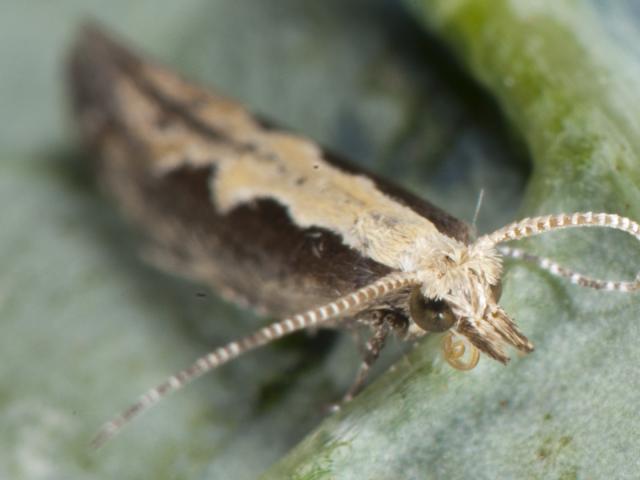
Growers are encouraged to monitor and report incidence of diamondback moth (DBM, Plutella xylostella) in Western Australian canola crops heading into spring.
The moth, which is often difficult to control with insecticides, has recently been seen in parts of the central and eastern grainbelt.
It rapidly develops resistance, and sustained use of an active insecticide (such as SPs) can result in high levels of resistance, locally.
The Department of Primary Industries and Regional Development recommends that growers adopt an Integrated Pest Management approach.
Economic thresholds for spraying vary from 30 to 200 larvae per 10 sweeps of an insect sweep net, depending on factors such as crop growth stage, grain price, cost of spraying and regional/seasonal conditions.
Industry-developed typical thresholds for DBM control with insecticides in WA conditions include:
- pre-flowering (stressed crop) - 30 or more grubs per 10 sweeps
- pre-flowering (no stress) - 50 or more grubs per 10 sweeps
- mid to late flowering (no stress) - 100 or more grubs per 10 sweeps
- pod maturation - 200 or more grubs per 10 sweep.
Other tips for insecticide use in canola crops include:
- target small larvae (less than 5mm long) with insecticides
- always be aware of withholding periods for products
- a two-spray strategy (five to seven days apart) can be more successful than a single application to kill survivors, or newly hatched larvae, in the second spray
- rotate insecticides
- consider spot spraying outbreaks at the edges of the paddock or where DBM are moving from areas of weed hosts
- if control failures occur, send samples of DBM survivors for early resistance testing to Greg Baker at the South Australian Research and Development Institute (SARDI) (mailing address: Greg Baker, Entomology, SARDI, GPO Box 397 Adelaide SA 5001).
A single insecticide spray application often provides poor control of DBM, so two sprays applied 5-7 days apart can help to ‘clean up’ the newly-hatched DBM larvae which survived the first application.
Withholding periods before swathing and harvest are the same, because swathing is considered to be a harvest event.
Beneficial insects can also help to control DBM populations, especially parasitic wasps and assassin bugs.
To avoid harming these insect populations, the department recommends the use of bio-pesticides.
There is also a number of naturally occurring fungal diseases that attack caterpillars, especially when the canopy is moist.
See Diamondback moth: cabbage pest in Indonesia and Western Australia for identification and management advice.
For more information contact Dusty Severtson, Development Officer, South Perth on +61 (0)8 9368 3249.
Canola variety guide aids selection decisions
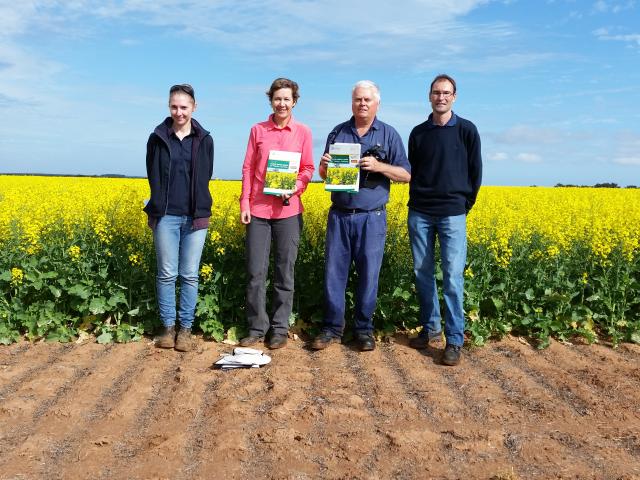
Canola growers planning next year’s crop now have access to the latest trial data and information to assist variety selection.
The 2018 Canola Variety Guide for Western Australia was prepared by the Department of Primary Industries and Regional Development and is based on variety performance in the Grains Research and Development Corporation’s (GRDC) National Variety Trials (NVT).
The updated guide included details about seven new varieties, including Triazine Tolerant (TT) varieties Hyola®350TT, SF Ignite TT and DG 670TT.
It also provides an overview of the new Roundup Ready® (RR) varieties Invigor R 3520, Pioneer 44Y27, DG 408RR and Hyola® 506RR.
The report consolidates results from 207 Western Australian NVT results acquired over the past five years, as well as data from 751 NVTs from around Australia over the same period.
NVTs are divided into early season trials for shorter season environments, which may suit early maturing varieties in northern and eastern areas, and mid-season trials sown in longer environments that suit mid-maturing varieties.
This makes it possible for canola growers to compare the performance of varieties best suited to their location.
The guide also outlines each variety’s pest and disease tolerance rating, as well as an update on variety blackleg resistance.
In 2016, TT varieties accounted for 74% of canola sown in WA, while RR varieties contracted slightly to 23% of the canola area.
Open pollinated TT varieties continued to be the most popular, comprising 71% of canola plantings in 2016.
ART Bonito continues to be the most widely sown canola variety, comprising 3% in 2016, followed by ART Stingray with 17%.
Hybrid TT varieties accounted for 2.5% of 2016 canola plantings, with Hyola® 559TT the most popular hybrid TT variety.
RR varieties comprised 23% of 2016 canola plantings, with Hyola® 404RR making up 8.6% and Pioneer 43Y23 6.8% of the total area sown to canola.
To access the PDF version of the guide refer to Current canola variety guide for Western Australia on the department website.
A hard copy will be mailed out to subscribers of the GRDC’s GroundCover magazine in September.
For more information contact Development Officer Jackie Bucat, South Perth on +61 (0)8 9368 3481.
Geraldton quinoa crop shows promise
Geraldton could prove to be a good location to grow the ancient grain, quinoa.
Quinoa has become a popular and fashionable meal component because of its high protein, gluten-free status. It is not a true grain but can be used in similar ways to rice and couscous.
The Department of Primary Industries and Regional Development (DPIRD) has been trialling quinoa, as the lead agency for a research project funded by AgriFutures Australia, at four sites across the state.
2017 is the first year of the Geraldton trial, and the plot was looking very promising.
Shifting the trial from Mingenew and Cunderdin, where temperatures are cooler, to a fertile soil in Woorree, close to the coast, where winter temperatures were warmer, may have made the difference.
Last year’s trials established and grew well, but produced very little seed. By contrast, quinoa at the Woorree site near Geraldton is now in full flower and looks certain to produce good seed yields.
Trial plots have also been sown this year at Eradu, Katanning, Esperance and Manjimup to test different varieties, planting times, sowing rates and herbicide applications.
Three advanced lines of quinoa developed by the department and AgriFutures Australia have been sown, as well as Medusa, the Three Farmers variety grown in Western Australia, and landrace varieties that originated in Chile and Bolivia.
Crop establishment has proven to be a challenge this year, with a number of failed trials.
While the Woorree trial is doing exceptionally well, the trials at Katanning, Esperance and Eradu are looking patchy and the Manjimup trial was only sown in late August so it is too early to tell how it will fare.
The successful plant establishment achieved at the Wooree site is likely to result from the selection of a fertile loam soil, adequate soil moisture at planting and precise placement of seed at a shallow depth.
A glasshouse experiment is in the pipeline to examine the potential factors affecting establishment.
The best yielding quinoa trial in the 2016 National Variety Trials was 2.7 tonnes per hectare, from an irrigated crop at Bool Lagoon in South Australia.
Above average winter temperatures affected the 2016 Kununurra irrigated trial, which produced a top yield of 1.2 tonnes per hectare, compared with the previous year where yields reached 2t/ha.
The Cunderdin site established well in 2016, however, frosts in August and September severely affected flowering and subsequent seed production.
The ‘Quinoa as a new crop in Australia – stage 2’ project will be completed in June next year with the support of DPIRD, the South Australian Research and Development Institute, Northern Territory Department of Primary Industry and Fisheries and New South Wales Department of Primary Industries.
This project is funded by AgriFutures Australia, the new trading name for the Rural Industries Research and Development Corporation.
For more information contact Richard Snowball, Research Officer, South Perth on +61 (0)8 9368 3517.


